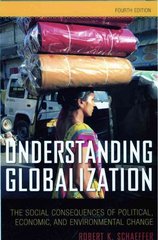Question
1.Let the random variable Y denote the size (in units of 1,000) of the loss per claim sustained in a particular line of insurance. Suppose
1.Let the random variable Y denote the size (in units of 1,000) of the loss per claim
sustained in a particular line of insurance. Suppose that Y follows a chi-square
distribution with 2 degrees of freedom. Two such claims are randomly chosen and
their corresponding losses are assumed to be independent of each other.
(i) Determine the mean and the variance of the total loss from the two claims. [2]
(ii) Find the value of k such that there is a probability of 0.95 that the total loss
from the two claims exceeds k. [2]
[Total 4]
2.The human resources department of a large insurance company currently estimates
that 82% of new employees recruited by their call centres will still be employed by
the company after one year. A recent extension to the call centre business led to 280
new employees being recruited.
Calculate an approximate value for the probability that at least 240 of these new
employees will still be employed by the company after one year.
3. A survey is undertaken to investigate the frequency of motor accidents at a certain
intersection.
It is assumed that, independently for each week, the number of accidents follows a
Poisson distribution with mean .
(i) In a single week of observation two accidents occur. Determine a 95%
confidence interval for , using tables of "Probabilities for the Poisson
distribution". [3]
(ii) In an observation period of 30 weeks an average of 2.4 accidents is recorded.
Determine a 95% confidence interval for , using a normal approximation. [3]
(iii) Comment on your answers in parts (i) and (ii) above. [1]
[Total 7]
4.A random sample of 25 recent claim amounts in a general insurance context is taken
from a population that you may assume is normally distributed. In units of 1,000,
the sample mean is x = 9.416 and the sample standard deviation is s = 2.105.
Calculate a 95% one-sided upper confidence limit (that is, the upper limit k of a
confidence interval of the form (0,k)) for the standard deviation of the claim amounts
in the population.
Step by Step Solution
There are 3 Steps involved in it
Step: 1

Get Instant Access to Expert-Tailored Solutions
See step-by-step solutions with expert insights and AI powered tools for academic success
Step: 2

Step: 3

Ace Your Homework with AI
Get the answers you need in no time with our AI-driven, step-by-step assistance
Get Started


